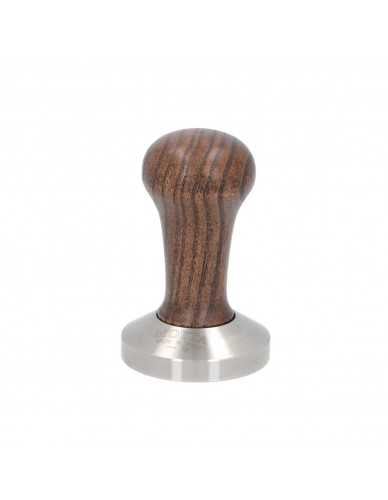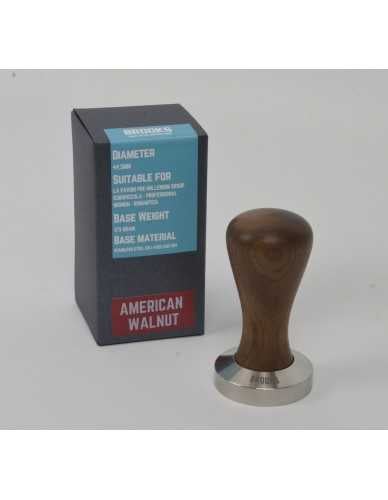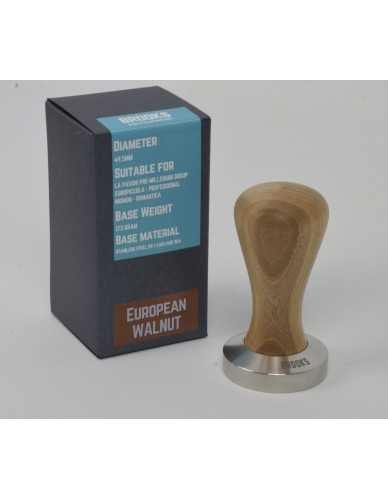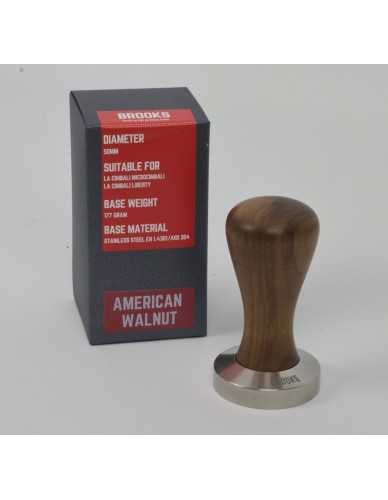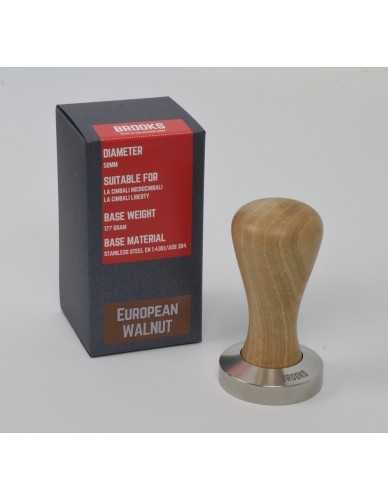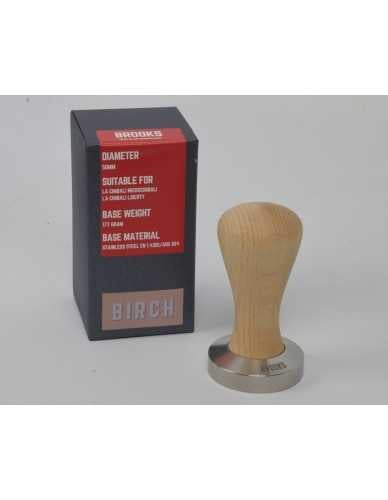Espresso coffee tamper
Espresso coffee tamper
There are 7 products.One of the most important espresso tools around is the coffee tamper. You will find this in every coffee bar, restaurant and hotel as well as in a home setup. Without a tamper you can’t make a good espresso.
But which model of tamper do you need for your application? This does depends on various factors, such as the brand, model, commercial or domestic espresso machine and the material.
Motta tamper 58mm wooden handle




 (0)
(0) The tamper on this product page is made by the Italian company Motta, one of the most famous espresso machine accessory manufactures. This specific tamper can be used on most commercial and domestic prosumer espresso machines, the most important thing is that the filterbasket needs to have a slightly bigger diameter then 58mm. This specific tamper has...
Tamper sizes
The most important thing of your coffee tamper is the outer diameter. This outer diameter is based on the inner diameter of the filter basket. These diameters range from 43mm all the way up to 58,4mm. The 58mm diameter is the most common size and can be found on most espresso machine brands such as Faema, Bezzera, La Marzocco, Kees van der Westen, Slayer and Rocket. A other common size is 57mm, this size is used by brands such as Cimbali, Casadio, Lelit, Rancilio, San Remo and Vibiemme. Note: a lot of baskets do also accept the 58mm tamper.
Other more sizes you will find are the 49mm, with brands such as Krups, La Pavoni and Olympia Express. The next size is 53nn, this size can be found on Astoria, Gruppo Izzo, La Pavoni, La Spaziale, Saeco Home, Starbucks Home, Solis and Wega. A other size is the 53mm, this is only used by La San Marco. Note: it is possible that some brands have different types of brewing groups, which have different diameters of filterbaskets.
Choosing the right coffee tamper
The “right” coffee tamper is mainly a personal preference. Do I want a full metal coffee tamper, or do I want one with a wooden handle? And what kind of wood do I want, seen there are numerous types of wood. They do have one thing in common, never dip them in water.
The base of coffee tampers is always made from food graded stainless steel. In some cases tampers are made from aluminium, but that is officially not food graded.
Origin of the coffee tamper
The espresso tamper can be traced back to Italy in the 1940s where it is believed to have been invented. The first tampers were made of wood and were used to pack coffee grounds into the portafilters of early espresso machines. Tampers were originally used to make coffee. These early tampers were basic and unrefined, but they were essential in laying the groundwork for the modern espresso tamper.
The demand for higher quality and more complex tampers increased in tandem with the rise in popularity of espresso. The use of metal in the construction of espresso tampers, which began in the 1950s and 1960s, resulted in the tampers' increased sturdiness and longevity.
The design of espresso tampers underwent a substantial transformation in the 1970s and 1980s, respectively. The lever espresso machine necessitated the use of a unique kind of tamper, which had a more level base than its predecessor. This enabled the user to apply a greater amount of pressure to the coffee grounds, which ultimately led to a more successful extraction.
In the 1990s, more premium materials such as stainless steel and titanium began to be utilised in the production of espresso tampers. These materials were not only more long-lasting and durable, but they also provided a more polished finish.
Automatic Tamper
In recent years, baristas and those who are passionate about coffee have shown a growing interest in a new automatic tamper known as the Puqpress. The Puqpress is quickly becoming a go-to tool for busy coffee shops as well as home baristas because it removes the element of uncertainty from the tamping process and ensures a uniform, perfectly level tamp every time. It was designed to do these things. The Puqpress, with its cutting-edge technology and streamlined aesthetic, provides a solution that is both convenient and effective for one of the most essential processes in the process of creating espresso. Next to Puqpress you have different brands

